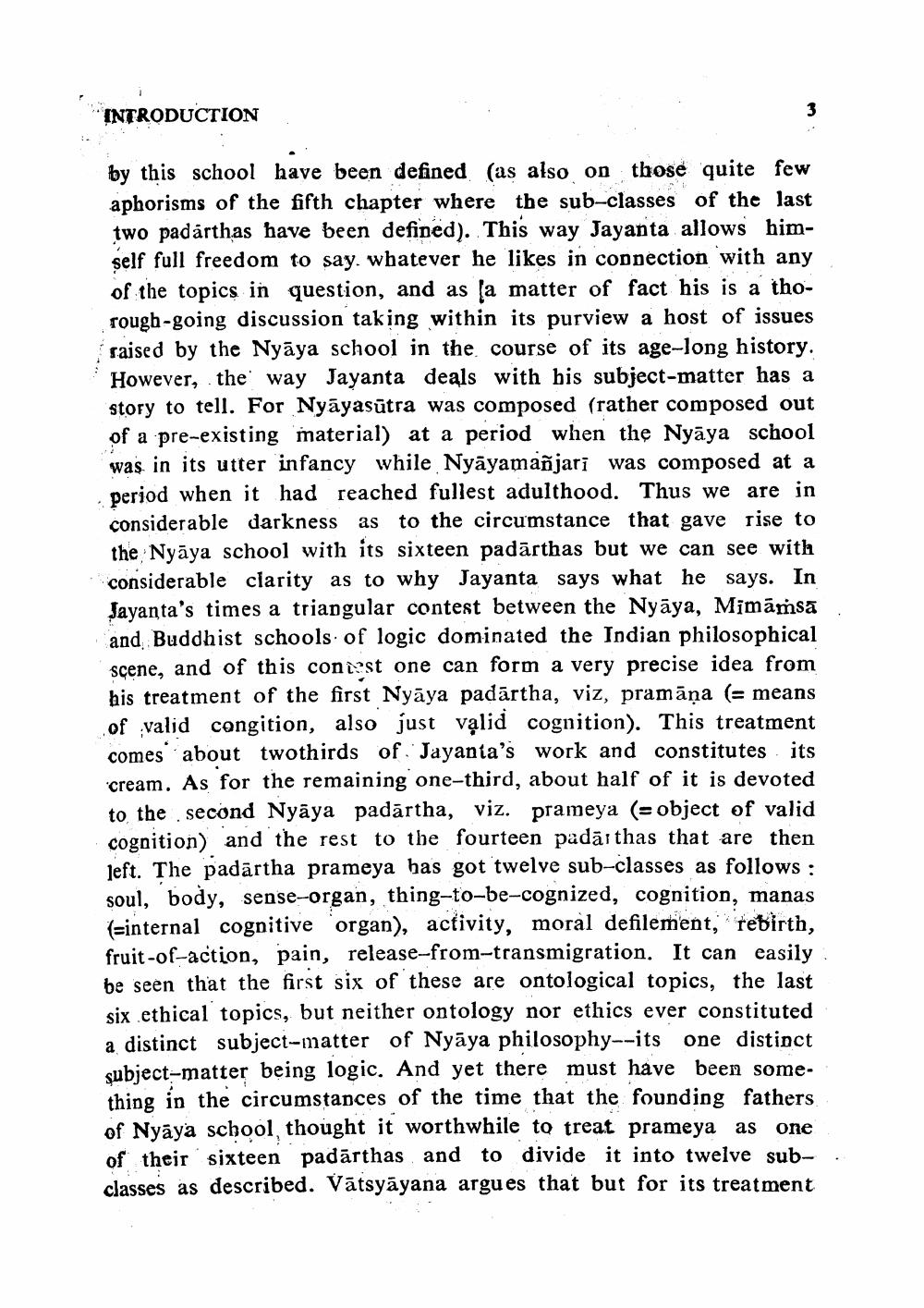________________
INTRODUCTION
by this school have been defined (as also on those quite few aphorisms of the fifth chapter where the sub-classes of the last two padárthas have been defined). This way Jayanta allows himself full freedom to say, whatever he likes in connection with any of the topics in question, and as a matter of fact his is a thorough-going discussion taking within its purview a host of issues raised by the Nyāya school in the course of its age-long history. However, the way Jayanta deals with his subject-matter has a story to tell. For Nyāyasūtra was composed (rather composed out of a pre-existing material) at a period when the Nyāya school was in its utter infancy while Nyāyamañjari was composed at a period when it had reached fullest adulthood. Thus we are in considerable darkness as to the circumstance that gave rise to the Nyāya school with its sixteen padārthas but we can see with considerable clarity as to why Jayanta says what he says. In Jayanta's times a triangular contest between the Nyāya, Mimāṁsā and Buddhist schools of logic dominated the Indian philosophical scene, and of this contest one can form a very precise idea from his treatment of the first Nyāya padārtha, viz, pramāņa (= means of valid congition, also just valid cognition). This treatment comes about twothirds of . Jayanta's work and constitutes its cream. As for the remaining one-third, about half of it is devoted to the second Nyāya padārtha, viz. prameya (= object of valid cognition) and the rest to the fourteen padārthas that are then left. The padārtha prameya has got twelve sub-classes as follows: soul, body, sense-organ, thing-to-be-cognized, cognition, manas (=internal cognitive organ), activity, moral defilement, rebirth, fruit-of-action, pain, release-from-transmigration. It can easily be seen that the first six of these are ontological topics, the last six .ethical topics, but neither ontology nor ethics ever constituted a distinct subject-matter of Nyāya philosophy--its one distinct subject-matter being logic. And yet there must have been something in the circumstances of the time that the founding fathers of Nyāya school, thought it worthwhile to treat prameya as one of their sixteen padārthas and to divide it into twelve subclasses as described. Vātsyāyana argues that but for its treatment




